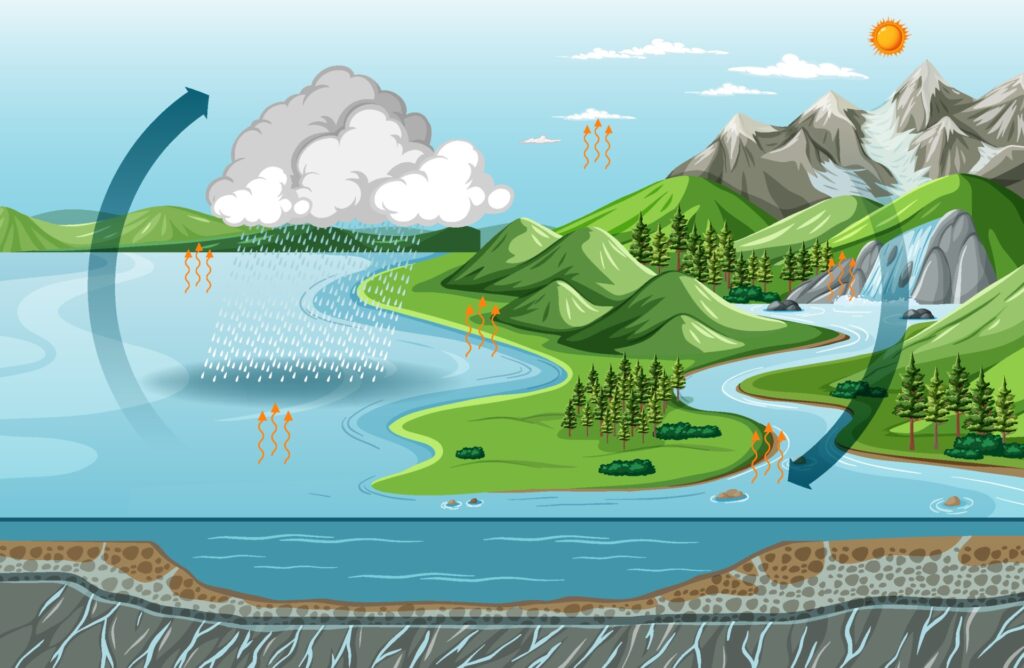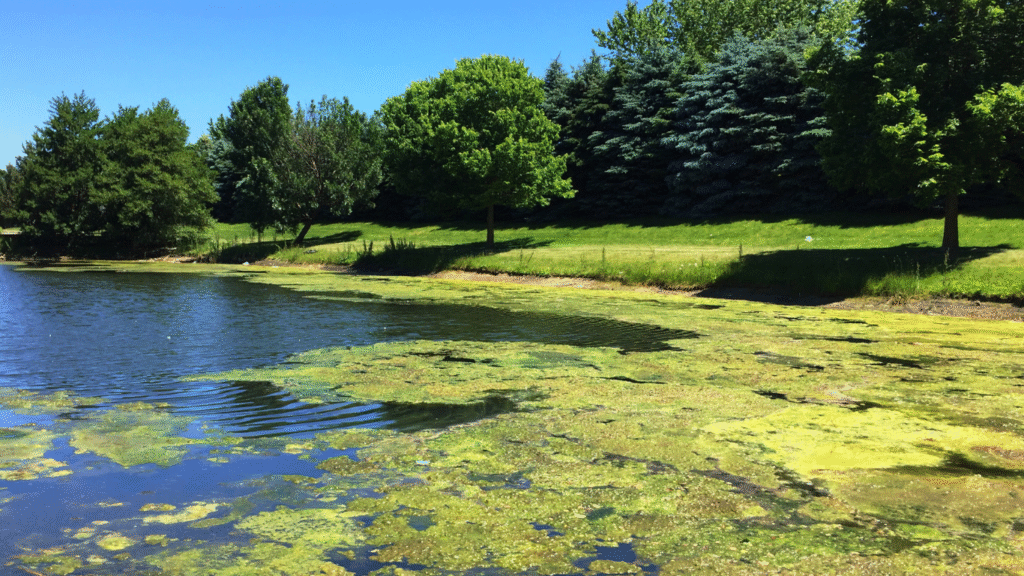
The Water Cycle Stages
- Evaporation – The cycle begins with the warming of the Earth’s surface, causing water from oceans, rivers, lakes, and even the soil to evaporate into vapor or water vapor. This process is driven by solar energy.
- Condensation – As the water vapor rises into the atmosphere, it cools and condenses to form clouds. These clouds consist of tiny water droplets or ice crystals.
- Precipitation – Eventually, the condensed water droplets in the clouds combine and grow larger. When they become heavy enough, they fall back to the Earth’s surface as precipitation in various forms, including rain, snow, sleet, or hail.
- Runoff – Precipitation that lands on the Earth’s surface may flow overland into rivers, streams, and eventually into larger bodies of water, such as lakes and oceans. Some precipitation also seeps into the ground to recharge groundwater.
- Transpiration and Evapotranspiration – Plants absorb water from the ground through their roots and release it into the atmosphere through a process called transpiration. When water is released from both plants and soil, it is referred to as evapotranspiration
- Repeat – The process continually repeats itself, ensuring a continuous flow of water throughout the planet, making water a finite but renewable resource.
How Hydroxyl II Affects the Water Cycle
When Hydroxyl II is used in farming, industries, lakes, lagoons, and other areas to purify water, it contributes to the preservation of the water quality within these systems. Hydroxyl II is a biologically integrated alternative to traditional chemicals. It precisely targets pathogens, contaminants and organic matter in pipes and water systems but leaves no chemical residue, breaking down into simple water and oxygen. This, in turn, ultimately benefits the entire ecosystem as the integrity of local water sources is maintained through the enhanced quality of runoff water, groundwater recharge, and water in nearby natural bodies, This interplay highlights the importance of responsible water management and its far-reaching implications on the world’s water resources.

